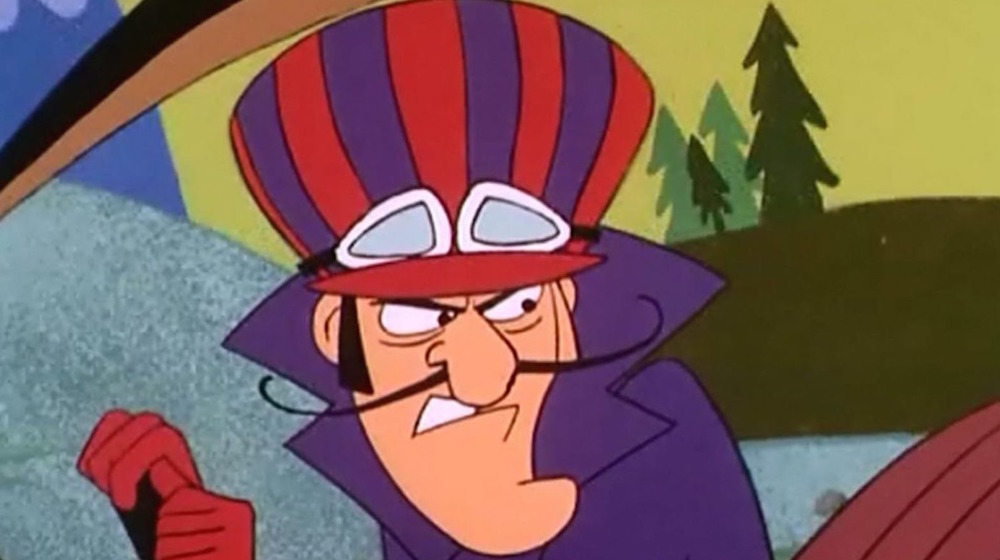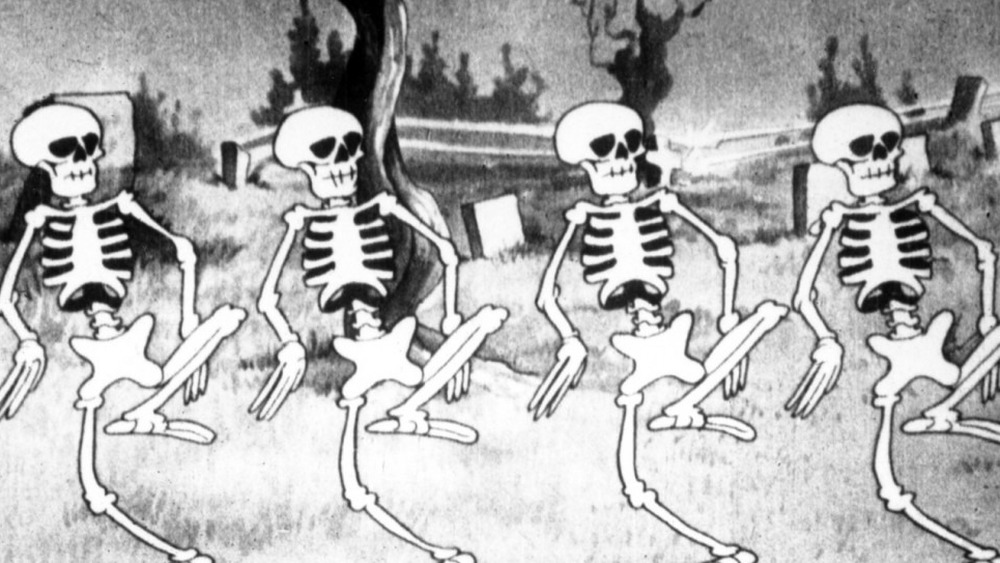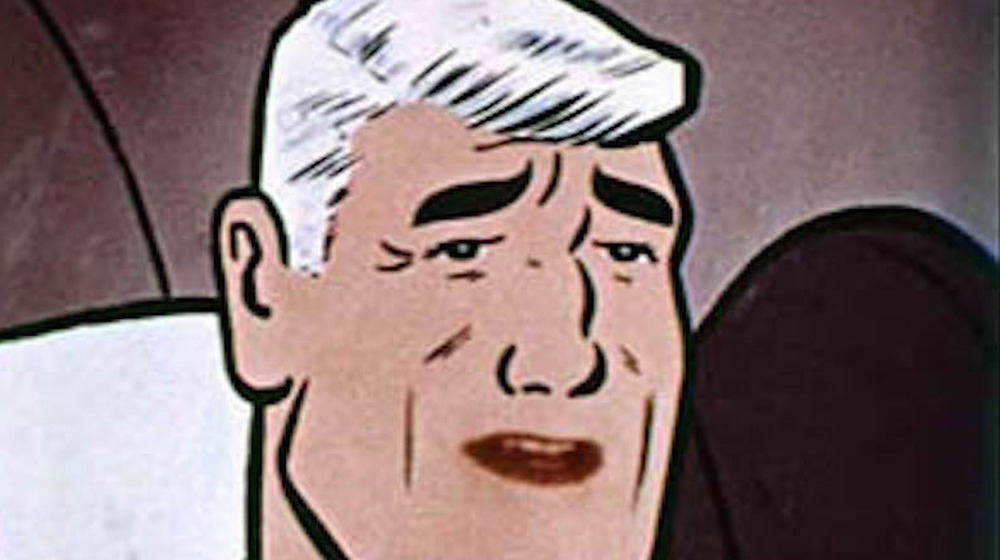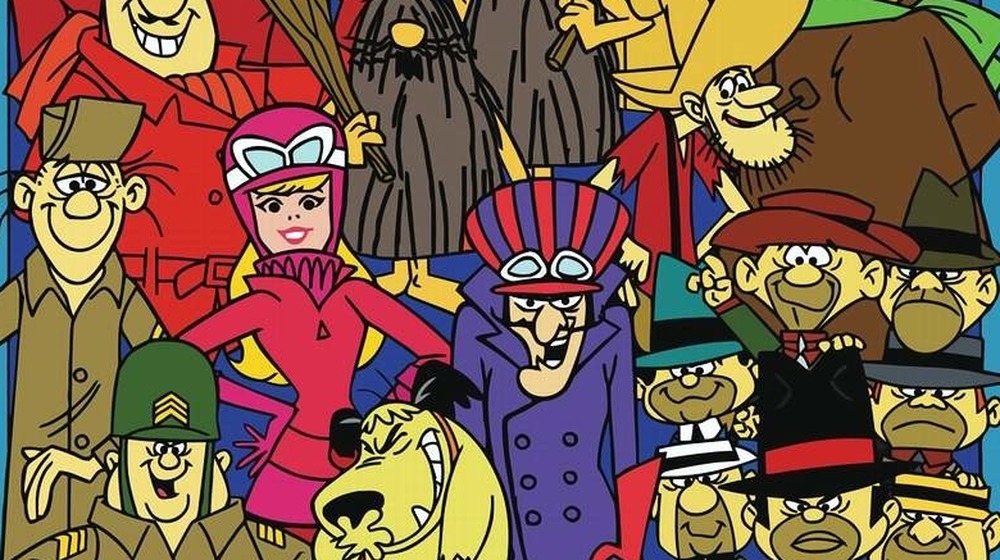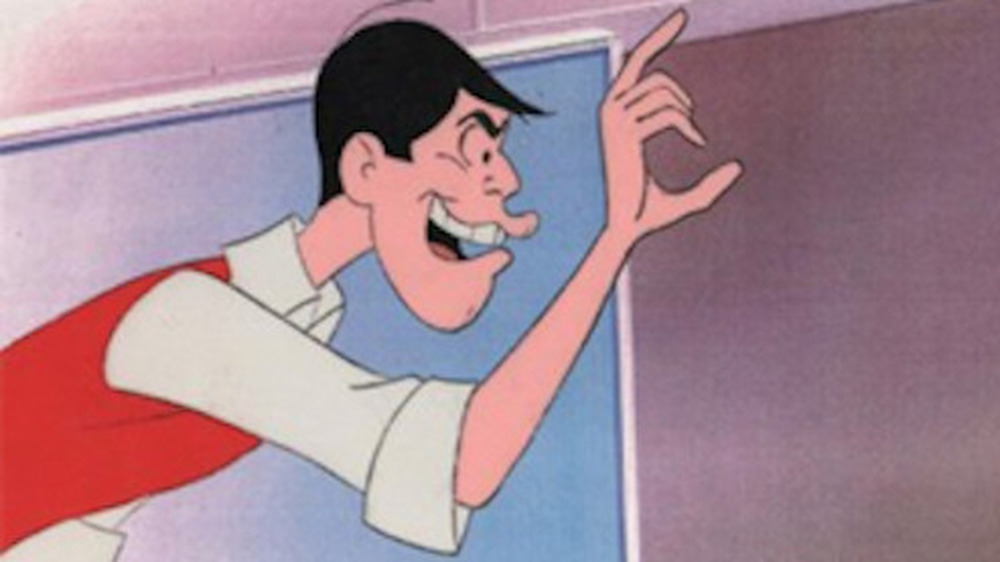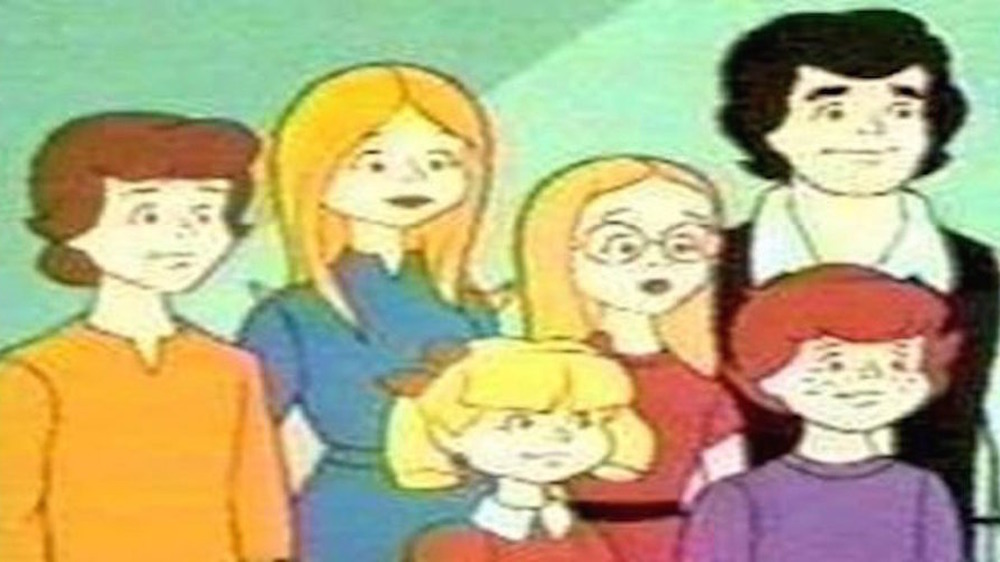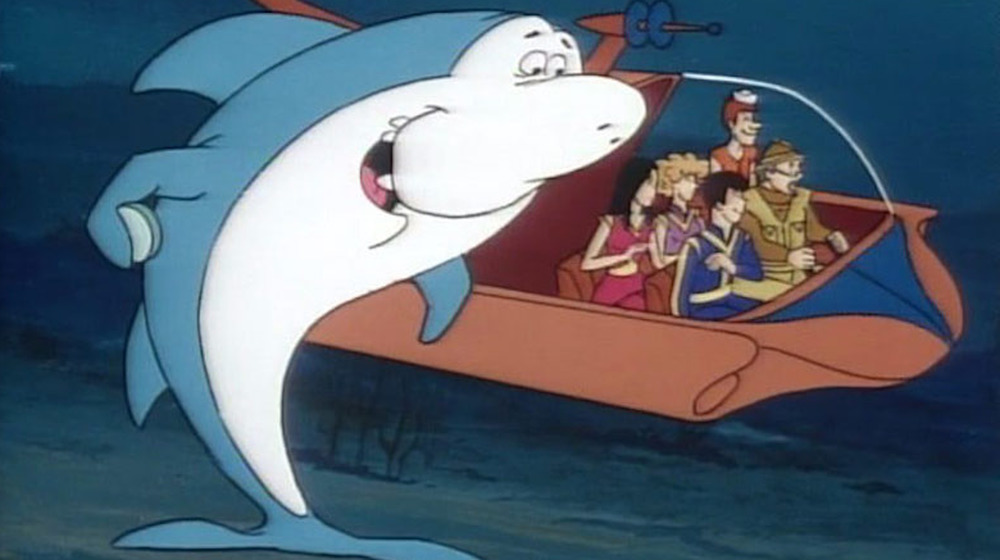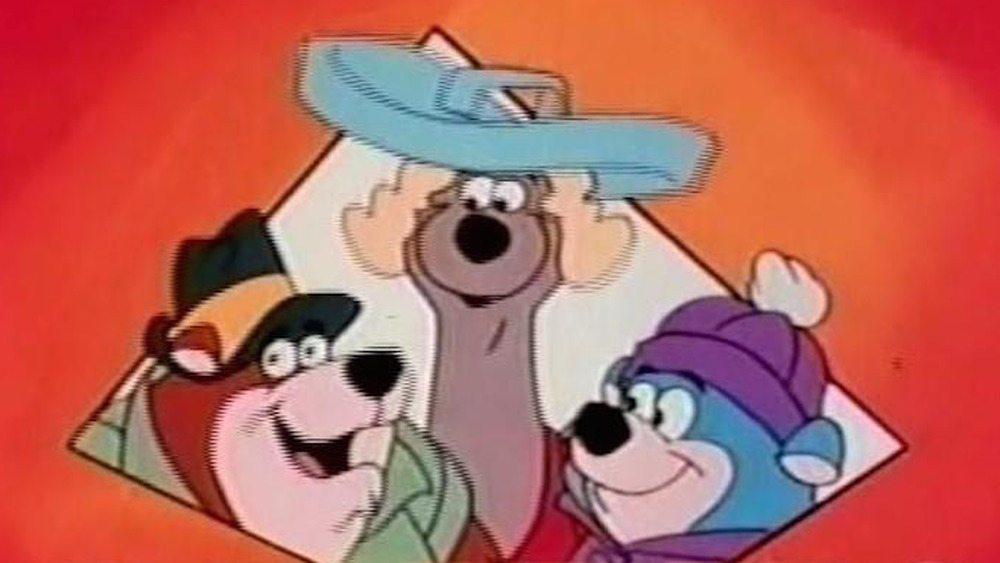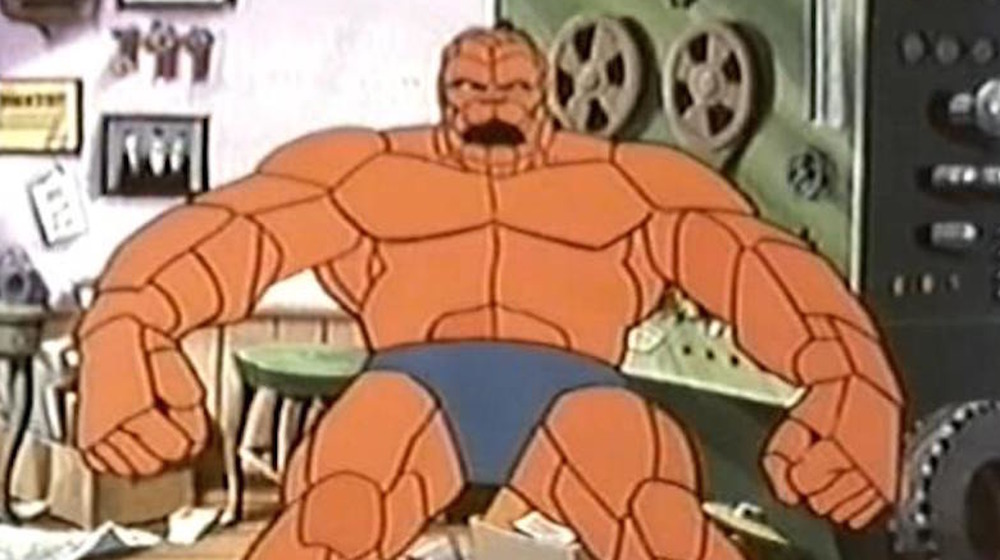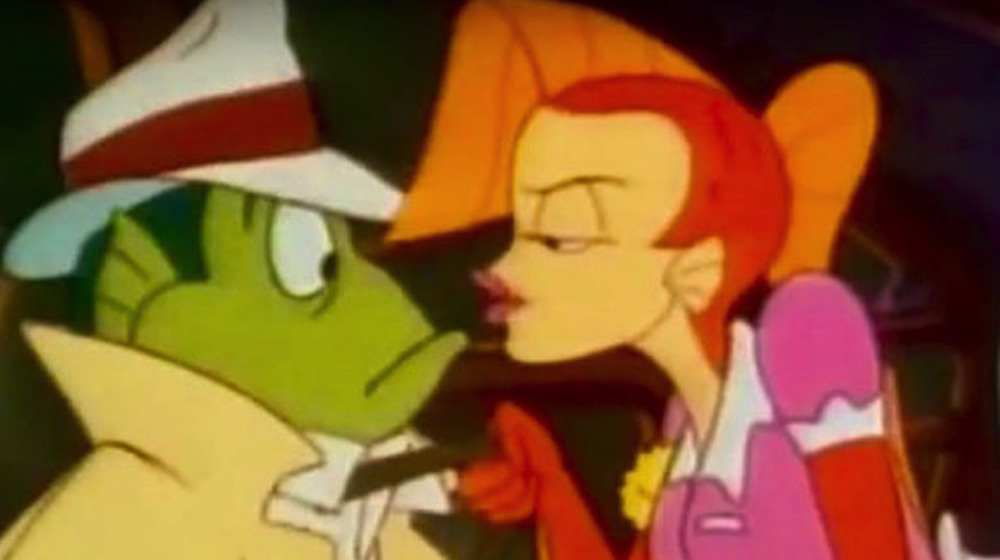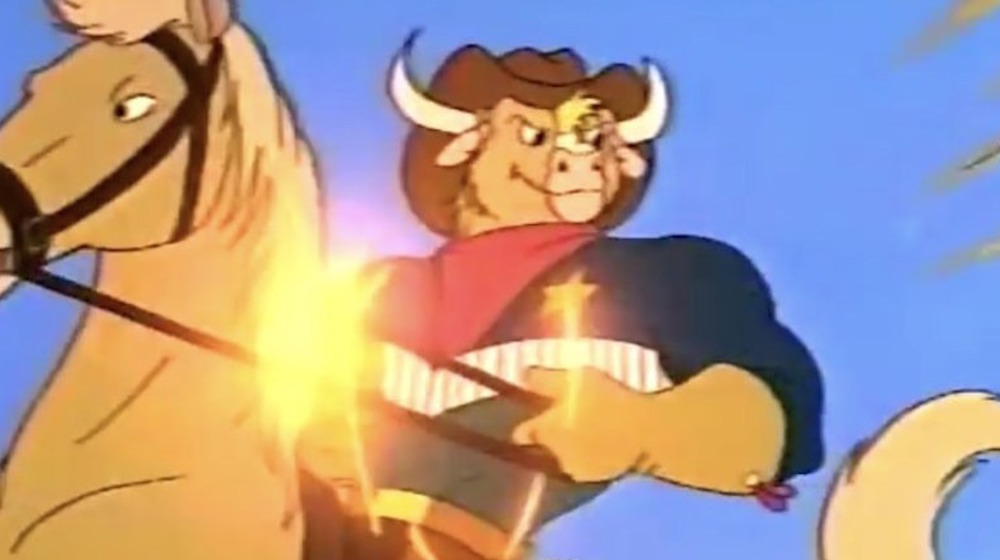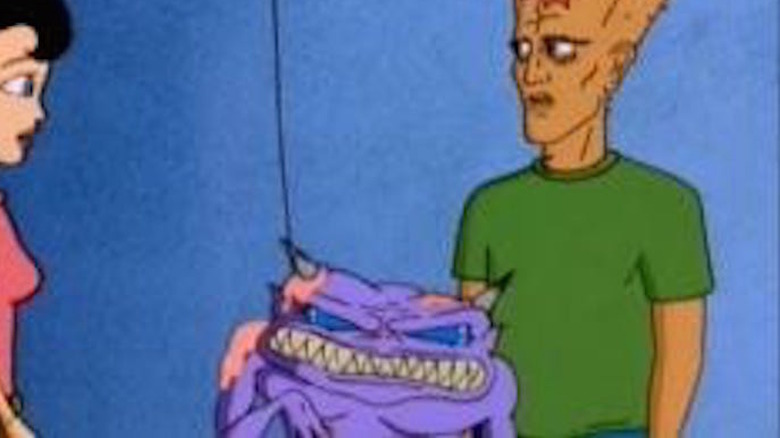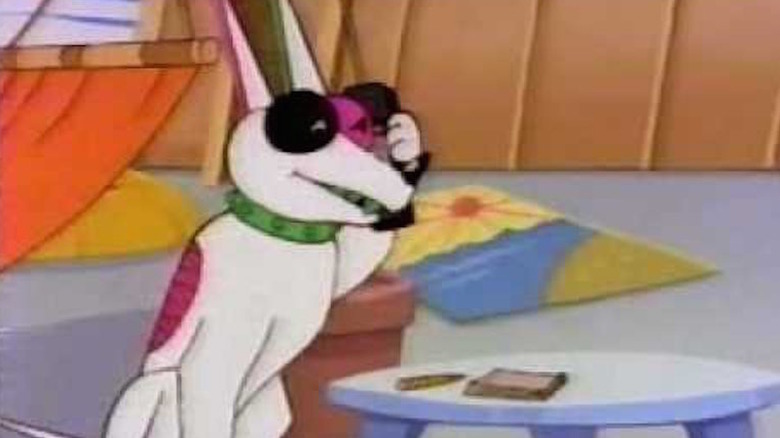The Weirdest Old-School Cartoons And Animated Series
If your taste in animated television series runs towards the unusual, you have your pick of any number of series from the past couple of decades. Rick and Morty, Big Mouth, BoJack Horseman, Harley Quinn, Infinity Train -– the list is long and diverse. But animated series that range far afield of superheroes and cute animals isn't a new phenomenon. Animation studios have been issuing subversive and strange series for decades, reaching back to the earliest days of motion pictures. Some of these oddball creations even originated in long-established, highly-celebrated companies, like Walt Disney Productions and Hanna-Barbera.
It's time we give the offbeat cartoons of yesteryear their due. What follows is a list of wonderfully weird cartoons –- well, some are just weird –- from the distant and not-so-distant past. Prepare to encounter some familiar faces in very strange scenarios, as well as a few bizarre characters who could only exist in the Saturday morning cartoon universe. Grab a bowl of sugary cereal and dive in.
Silly Symphony -- or strange shorts?
Silly Symphony, a series of 75 animated musical shorts produced by Walt Disney Productions between 1929 and 1939, is probably the most acclaimed cartoon series on this list. The recipient of seven Academy Awards for Best Animated Short Film, these shorts were the first animated project to employ the three-strip Technicolor process, and introduced audiences to Donald Duck in 1934's The Wise Little Hen.
But for all of Silly Symphony's superlatives, the series also contains some truly strange and even startling images. There are the dancing skeletons that crawl out of a grave to play music on each other's bones in the first Silly Symphony short, "The Skeleton Dance" (1929); a visit to Hell, where monsters and demons cavort and consume each other in "Hell's Bells" (1929); a tribe of comic headhunters (!) in "Cannibal Capers" (1930); a brawl between trees for the hand of a female plant, which results in a forest fire in "Flowers and Trees" (1932); and "The Cookie Carnival" (1935), which features the sight of ambulatory sweets and treats competing for the title of cookie queen. Historically important? Yes. Award-winning? For sure. Completely and utterly weird? Yep, that too.
Clutch Cargo gave cartoons terrifying human mouths
Any mention of "weird cartoons" has to include Clutch Cargo. The 1959 syndicated series focuses on the globe-trotting adventures of its eponymous hero. This isn't, in and of itself, particularly unusual. What pushes Clutch Cargo from simple cartoon into the realm of the bizarre is its use of Syncro-Vox (or Synchro-Vox), an optical printing system that combines static and moving images. For Clutch and its other animated series, Space Angel and Captain Fathom, Cambria Productions superimposed live-action shots of actors' mouths reciting lines over the static mouths of the show's characters.
The process saved Cambria buckets of cash by eliminating one of the most difficult elements of character animation: Syncing mouths and dialogue. But this also resulted in some truly disorienting and even downright disturbing visuals. Surprisingly, Clutch was a hit with viewers, and ran for 52 episodes before running its course. Clutch Cargo and Syncro-Vox have since become synonymous with the limitations of early TV, though the process has enjoyed something of a second life. A Clutch clip is featured in Pulp Fiction, and Late Night with Conan O'Brien was known to feature interviews with famous figures, who were all actually static images with the voice and mouth of Robert Smigel imposed over their silent mugs.
Wacky Races is motor mayhem, cartoon style
Though just 17 episodes were produced, Hanna-Barbera's Wacky Races has remained one of the studio's most popular titles since its original broadcast on CBS from 1968 to 1969. The show has yielded numerous spin-offs, including a stand-alone series anchored by its saintly heroine, Penelope Pitstop. Wacky Races itself has been rebooted several times, most notably in comic book form. That series sets the action in a post-apocalyptic environment — think Wacky Races: Fury Road.
The key to the show's enduring appeal? Simply put, it's weird people chasing, and occasionally crashing into, each other in weird cars. Said cars are outrageously designed –they're a remarkable mix of Rube Goldberg, "Big Daddy" Roth, and every kid's go-cart dreams. They include the Creepy Coupe, a Gothic mansion on wheels fueled by a dragon; a souped-up tank called the Army Surplus Special; and the Arkansas Chuggabug (what a name!), which is essentially a wooden front porch with wheels, powered by a coal stove. Each episode covers another leg of the cross-country race and spotlights the rankings of the top three winners. For the record, Penelope Pitstop and the pint-sized gangsters in the Ant Hill Mob take home the most honors in each leg. Who says the good guys don't win?
The Real Jerry Lewis and his cartoon alter ego
Comic Jerry Lewis had already appeared in cartoon form in DC Comics' Adventures of Jerry Lewis, but Will the Real Jerry Lewis Please Sit Down unleashed multiple animated Jerrys upon an unsuspecting audience. The series ran for 18 episodes, which aired on ABC between 1970 and 1972. The flesh-and-blood Lewis lent his input to the show, but left the look and direction to Filmation, the animation company behind He-Man and the Masters of the Universe and the Emmy-winning Star Trek: The Animated Series.
Each episode focuses on Jerry (voiced by David L. Lander, who played Squiggy on Laverne & Shirley) as he wreaks havoc at various temp jobs. This alone would qualify as absolute anarchy, but Filmation stacked the deck by adding a supporting cast of Lewis' characters (many snagged from his features like The Family Jewels), including his Professor Frink-like father, his sister Geraldine, a gangster, an old salt sailor, and a Chinese detective and his colossal son. Those last two are just a couple of the cringe-inducing ethnic stereotypes featured on the show. It's a dizzyingly chaotic watch, even today.
Here's the story of the Brady Kids cartoon
When it comes to bizarre Brady Bunch spin-offs, nothing beats 1976's Brady Bunch Variety Hour, which showcases the Brady clan performing the Hustle, interacting with Sid and Marty Krofft's puppets, and sharing the screen with Charo, among other psychedelic sights. But a close second might be The Brady Kids, a Saturday morning animated series that aired from 1972 to 1973. The program eliminates all the adults (even Alice), and focuses squarely on the Brady siblings. Also, they have a talking mynah bird with magical powers, which allows them to travel through time and interact with Superman, Wonder Woman, the Lone Ranger, and the Abominable Snowman, among others.
Adding to the show's surreal nature was Filmation's cash-conscious animation style, which made frequent use of frame-by-frame replacements, movement loops, and animated sequences copied from The Archie Show. Despite these issues, The Brady Kids pleased enough fans to earn two seasons on ABC. Less happy were the stars, who were reportedly displeased with their contracts with Filmation, and were encouraged by their management to ask for more money. When Filmation balked, Barry Williams (Greg), Christopher Knight (Peter), and Maureen McCormick (Marcia) left the series, and were replaced by, among others, producer Lou Schiemer's own kids. Eve Plumb (Jan), Mike Lookinland (Bobby), and Susan Olsen (Cindy) continued with the show until the end of the second and final season.
Jabberjaw and Misterjaw showed the funny side of great white sharks
Rarely (if ever) mentioned in lists of media influenced by Jaws are the 1976 cartoons Jabberjaw and Misterjaw, both of which star wacky anthropomorphic sharks. However, the two shows (and sharks) couldn't be less alike: Jabberjaw, produced by Hanna-Barbera, concerns a great white shark who sounds like Three Stooges vet Curly Howard (played by voice-acting legend Frank Welker), who serves as drummer for a rock band that plays underwater cities in the year 2076. Like so many H-B series, Jabberjaw is cut from the same cloth as two of its most popular properties, Scooby-Doo and Josie and the Pussycats. It hinges its 16 episodes on Jabberjaw and the band thwarting futuristic supervillains and alleged monsters.
Misterjaw, from DePatie-Freleng Enterprises (known for the Pink Panther cartoons), follows the misadventures of a great white in a top hat and vest, voiced by Arte Johnson doing a variation of his German soldier character from Laugh-In. Misterjaw's primary interest appears to be frightening people. Despite that limited premise, Misterjaw ran for 34 episodes, but appears to be all but forgotten today. Jabberjaw, however, retains an enduring fanbase, and has appeared in countless other H-B series and features, as well as comics, two educational filmstrips, and even a crossover with Aquaman from DC Comics.
CB Bears: An omnibus of cartoon oddities
Hanna-Barbera frequently bundled short-format series into anthology programs. Several of these, like Hanna-Barbera's World of Super Adventure, are nostalgic pleasures that extended the popularity of vintage shows like Space Ghost. Others are like CB Bears, a short-lived bundle of six all-new programs that aired briefly on NBC in 1977. Despite its short network run, CB Bears distinguishes itself by offering some of the most curious premises around.
The CB Bears shorts feature a trio of ursine garbage collectors who solve mysteries assigned to them by an unseen boss, who communicates through their truck's CB radio. Blast-Off Buzzard is a silent segment that borrows the Wile E. Coyote/Road Runner structure, with a vulture pursuing (and failing to catch) a football helmet-wearing snake. Heyyy, It's the King! is an animated take on Happy Days, with the Fonz replaced by a lion. Posse Impossible focuses on an inept sheriff and his deputies. Shake, Rattle & Roll features a trio of ghosts who operate a hotel for supernatural entities. Undercover Elephant follows a secret agent pachyderm and his mouse partner. Such a preponderance of total oddballs, even by Hanna-Barbera and 1970s cartoon standards, undoubtedly ensured the series' early demise after only 13 episodes. But several segments were later folded into Captain Kangaroo and Hanna-Barbera's Harlem Globetrotters series, so it wasn't a total wash.
When Fred and Barney met the Thing
Hanna-Barbera and Marvel first collaborated on the well-regarded Fantastic Four cartoon in 1967. The comics giant later released several series based on H-B properties, including Scooby-Doo, in the late '70s. Between these efforts was Fred and Barney Meet the Thing, an animated package series that aired on NBC in 1979. As the title suggests, the cartoon teams Fred Flintstone and Barney Rubble up with Benjamin Grimm, AKA the Thing, a stalwart member of Marvel's Fantastic Four.
The title is a straight-up lie: The three characters only interact in the title sequence and in bumpers between the segments. But this is perhaps the least weird thing about the series. While the Flintstones characters remain the same, the Thing's half of the program completely revamps the character. Ben Grimm is now "Benjy Grimm," a gawky teenager who can transform into the Thing by pressing two magic rings together and uttering, "Thing ring, do your thing!" Reed, Sue, and Johnny Storm are nowhere to be found.
Apparently, H-B didn't consider pairing up the Thing and the Flintstones strange enough. And so they folded the Shmoo -– the amorphous creatures from the Li'l Abner comic strip -– into the series, which was redubbed (what else?) Fred and Barney Meet the Shmoo in 1980. Again, the four stars never appear together, save for the between-segment bumpers. For fans of the individual characters, this was most likely a blessing in disguise.
Fish Police got a bad rap
The popularity of The Simpsons led other networks to try their hand at primetime animated series during the early 1990s. Hanna-Barbera, having previously struck gold in this manner with The Flintstones and The Jetsons, chose Steve Moncuse's critically praised comic book Fish Police for its return to the time slot in 1992. The series, which aired on CBS, follows the basic premise of its source material, which sees piscine detective Gil (voiced by John Ritter) fighting squid crime boss Biscotti Calamari and his underwater underworld empire in Fish City. The tone is decidedly more mature than Saturday morning fare, and employs an impressive array of voice talent, including Hector Elizondo, Ed Asner, Megan Mullally, and Jonathan Winters. But at the end of the day, the series couldn't rise above the fact that it's a cop show starring sea creatures. A combination of weak ratings, poor critical response, and a high price tag ($600,000 per episode) led CBS to flush the series after just three episodes.
Of C.O.W.-Boys and Street Sharks
The widespread popularity of Teenage Mutant Ninja Turtles in the early '90s spawned a host of other anthropomorphic crimefighters. One of the oddest efforts in this vein was Wild West C.O.W.-Boys of Moo Mesa, which aired on ABC from 1992 to 1993. Created by writer and artist Ryan Brown (Teenage Mutant Ninja Turtles Adventures), Wild West imagines a comet striking a Western mesa in the 1800s, which gives the cow population human properties -– and a taste for Old West law and order, maintained by a posse of C.O.W. (Code of the West)-boys. Opposing them are various bad bulls, buzzards, snakes, and bats, voiced by (among others) Tim Curry, Star Trek: Voyager's Kate Mulgrew, and Joe Piscopo.
Not to be outdone in the animal avenger department, DiC Productions unleashed Street Sharks, which aired in syndication from 1994 to 1997. Here, the pivotal act of weird science is a DNA experiment that transforms four teens into jacked-up, ambulatory sharks. A whole horde of humanoid sea creatures are featured within the series' run, including man-shrimp and bipedal lobsters, as well as a gangster rhinoceros. There are even some warring dinosaurs, who eventually got their own series: Dino Vengers.
The Head was ahead of its time
Shortly before MTV transitioned its focus from music videos to reality programming, the network aired Liquid Television, a showcase for adventurous animated series, from 1991 to 1995. The series served as an incubator for several popular cartoon programs, most notably Beavis and Butt-head and Aeon Flux. Some of the most unusual shorts were featured in a sister program, MTV's Oddities. Chief among the latter show's slate was The Head, a science fiction series created by Eric Fogel (Celebrity Deathmatch), which follows a trade school student named Jim whose head grows to king-sized proportions.
This enlargement is revealed to be the hiding place for an alien named Roy, who enlists Jim in his fight against another more aggressive extraterrestrial named Gork. Assisting them in their efforts are Jim's girlfriend and members of a support group for very unusual people, including a gardener with a lawnmower blade embedded in his face and a man whose mouth conceals an entire goldfish bowl. Said support group eventually becomes the focus of The Head in its second season, but audiences were prevented from following their further adventures when MTV yanked Oddities from its lineup.
Rude Dog and the Dweebs is as bad as it sounds
Produced by Marvel's TV wing in 1989, Rude Dog and the Dweebs was an attempt to turn Rude Dog, the quasi-New Wave mascot for Sun Sportswear's then-ubiquitous line of skate and surf T-shirts, into a Saturday morning superstar. The problem is, anchoring a weekly animated series with a main character who is little more than a Day-Glo graphic spouting 'tude-heavy slogans isn't a winning formula. The solution? Team Rude Dog (voiced by Rob Paulsen of Pinky and the Brain fame) with a gaggle of neurotic mutts he lovingly (and rightly) dubs "the Dweebs" (all performed by cartoon legends like Frank Welker, Peter Cullen, and Jim Cummings). Rude Dog imparts valuable lessons on the importance of being, um, "rude" to his acolytes. Add in an auto repair shop and a pair of hissable villains (a deranged cat and a dogcatcher) and hilarity is sure to ensure!
Only, it didn't. Rude Dog is the sort of self-aggrandizing, faux-cool jerk that The Simpsons parodied with Poochie. His adventures with the Dweebs are, at best, nonsensical, as when the Dweebs must teach a cow how to moo. Most of all, the already-grating concept of "rudeness" is applied to almost anything, in ways that read as cringeworthy then. CBS pulled the plug on Rude Dog after just 13 dweeb-tastic adventures.
